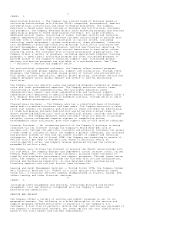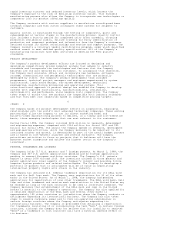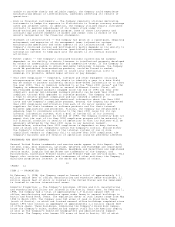Dell 1997 Annual Report Download - page 15
Download and view the complete annual report
Please find page 15 of the 1997 Dell annual report below. You can navigate through the pages in the report by either clicking on the pages listed below, or by using the keyword search tool below to find specific information within the annual report.Days in accounts payable............................... 51 54 33
During fiscal 1998, the Company generated $1.6 billion in cash flows from
operating activities, which represents the Company's principal source of cash.
Cash flows from operating activities benefited from increased net income and
continued asset management focus.
During fiscal 1998, the Company repurchased 69 million shares of its common
stock for an aggregate cost of $1.0 billion. The Company is currently authorized
to repurchase up to 100 million additional shares of its common stock and
anticipates that repurchases under this program will constitute a significant
use of future cash resources. At February 1, 1998, the Company held equity
instrument contracts that relate to the purchase of 50 million additional shares
of its common stock for an average cost of $44 per share exercisable at various
times in the first quarter of fiscal 1999 through the third quarter of fiscal
2000. For additional information regarding the Company's stock repurchase
program, see Note 7 of Notes to Consolidated Financial Statements.
The Company utilized $187 million in cash during fiscal 1998 to construct and
equip manufacturing and office facilities. The Company expects to spend
approximately $330 million to purchase capital items for manufacturing and
office facilities during fiscal 1999 to support the Company's continued growth.
During fiscal 1998, the Company replaced two revolving credit facilities with
one $250 million 5-year revolving credit facility. Additionally, during fiscal
1996, the Company entered into a transaction that gives the Company the ability
to raise up to $150 million through a receivables securitization facility. At
both February 1, 1998, and February 2, 1997, these facilities were unused.
During fiscal 1998, the Company entered into a $227 million master lease
facility, which allows the Company to lease certain real property, buildings and
equipment to be constructed or acquired. At February 1, 1998, $43 million of
this facility had been utilized.
In March 1998, the Company filed a registration statement with the U.S.
Securities and Exchange Commission related to $500 million of debt securities.
Presently, no securities under this registration are issued or outstanding.
Management believes that the Company has sufficient resources from cash provided
from operations and available borrowings to support its operations and capital
requirements for at least the next twelve months.
16
<PAGE> 18
MARKET RISK
The Company is exposed to a variety of risks, including foreign currency
fluctuations and changes in the market value of its investments. In the normal
course of business, the Company employs established policies and procedures to
manage its exposure to fluctuations in foreign currency values and changes in
the market value of its investments.
Foreign Currency Hedging Activities
The Company's objective in managing its exposure to foreign currency exchange
rate fluctuations is to reduce the impact of adverse fluctuations in earnings
and cash flows associated with foreign currency exchange rate changes.
Accordingly, the Company utilizes foreign currency option contracts and forward
contracts to hedge its exposure on anticipated transactions and firm
commitments. The principal currencies hedged are the British pound, Japanese
yen, German mark, French franc and Canadian dollar. The Company monitors its
foreign exchange exposures daily to ensure the overall effectiveness of its
foreign currency hedge positions. However, there can be no assurance the
Company's foreign currency hedging activities will substantially offset the
impact of fluctuations in currency exchange rates on its results of operations
and financial position.
Based on the Company's foreign exchange instruments outstanding at February 1,
1998, the Company estimates a maximum potential one-day loss in fair value of
$12 million, using a Value-at-Risk ("VAR") model. The VAR model estimates were
made assuming normal market conditions and a 95% confidence level. There are
various types of modeling techniques that can be used in a VAR computation; the
Company used a Monte Carlo simulation type model that valued its foreign
currency instruments against a thousand randomly generated market price paths.
Anticipated transactions, firm commitments, receivables and accounts payable
denominated in foreign currencies were excluded from the model. The VAR model is
a risk estimation tool, and as such is not intended to represent actual losses
in fair value that will be incurred by the Company. Additionally, as the Company
utilizes foreign currency instruments for hedging anticipated and firmly
committed transactions, a loss in fair value for those instruments is generally
offset by increases in the value of the underlying exposure. Foreign currency
fluctuations did not have a material impact on the Company during fiscal years
1998, 1997 and 1996.
























